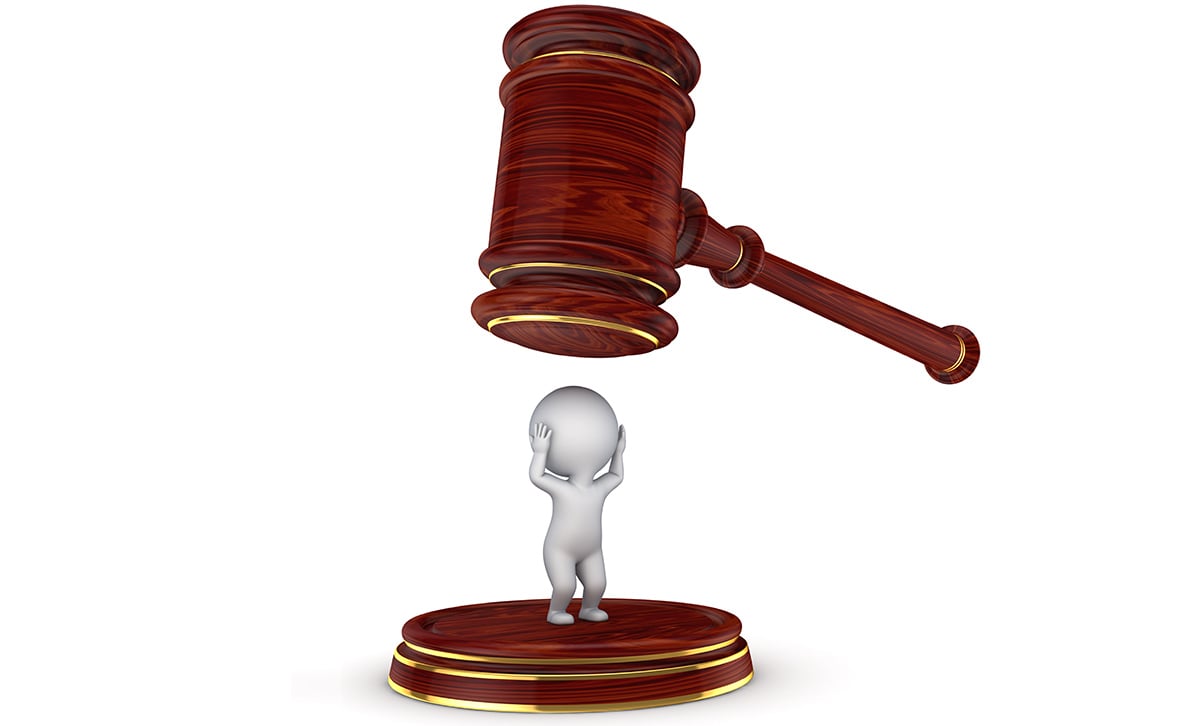After several drinks at a Greek restaurant on Manhattan's Third Avenue in the summer of 2006, two computer programmers at Bernard Madoff's investment firm asked their supervisor whether the boss's business was a scam.
Chief Financial Officer Frank DiPascali laughed off the question, telling George Perez and Jerome O'Hara that Madoff was honest. DiPascali would later tell the FBI he wondered why they took so long to ask.
His chronicle of the dinner, and the lengths to which Madoff went to convince employees that his massive fraud was a legitimate business, were revealed for the first time in FBI reports made public last week. Attached to court filings by ex- Madoff employees facing fraud charges, they contain interviews with DiPascali — Madoff's chief aide — who in 2009 pleaded guilty to his role in the biggest Ponzi scheme in U.S. history.
Once, when Perez and O'Hara confronted Madoff and asked why there were no signs of stock trades, Madoff exploded, DiPascali told the FBI.
“You are not going to tell me how to run my business,” Madoff insisted during a meeting in the office of the firm's operations chief, Daniel Bonventre, according to DiPascali. “Trades occur overseas.”
Madoff, 73, pleaded guilty to fraud in 2009 and is serving a 150-year term for cheating investors out of $20 billion in principal. Five employees — Perez, O'Hara, Bonventre, Annette Bongiorno and Joann Crupi — are accused of aiding Madoff in his fraud. Defense attorneys said they'll use DiPascali's comments to establish their clients were unaware of Madoff's scheme.
Starting in 1968
Bonventre and Bongiorno began working for Madoff in 1968, with Bongiorno rising to the level of supervisor and account manager. Crupi, an employee since 1983, tracked daily bank account activity, prosecutors said. Perez and O'Hara started at the firm in the early 1990s.
The five were arrested in 2009 and 2010. In addition to DiPascali, who began working for Madoff in 1975, former employees David Kugel, Enrica Cotellessa-Pitz and Eric Lipkin have pleaded guilty and are aiding prosecutors.
Most of the FBI reports are snippets of DiPascali's debriefings from mid-2009 to mid-2010, with one coming as recently as February. Yet to be sentenced and free on bail, DiPascali has been cooperating with the government.
His description in the heavily redacted files of the 2006 dinner is the most detailed account yet of how Madoff deceived subordinates.
A Crook?
Asked if his boss was a crook, DiPascali said he gave Perez and O'Hara the same explanation Madoff had given him.
“The explanation involved the idea that, because Madoff was trading not as an agent but as principal, making these trades out of his own inventory that was kept at various places overseas, he was able to allocate these trades to customers after the fact, back-date their trades, and do other things with the accounts a broker acting as an agent would not be able to do,” the FBI report states. DiPascali “reassured them that Madoff had so many investments and assets.”
Identified in some FBI reports only as “Individual,” DiPascali dated Madoff's deception to the early 1970s, when Bernard L. Madoff Investment Securities LLC was housed in a small office on Wall Street. In their guilty pleas, Madoff and DiPascali traced the Ponzi scheme to the 1980s or later.
Creating Records
“Madoff would very vocally proclaim he had just had achieved great financial success with a deal he had been arranging in Europe or somewhere else,” DiPascali told the Federal Bureau of Investigation. The report stated that “while not understanding it at the time, Individual eventually realized those pronouncements were calculated by Madoff to perpetuate” the impression that “trading activity was somehow backed up by his deals and investments overseas.”
Early on, Madoff began planning for a fraud that might last for years, DiPascali told agents.
“Well before it actually happened,” Madoff expected that outside auditors would want to see his firm's books, and he asked his lieutenant, DiPascali, to “start creating them,” they wrote in an FBI report.
“To accomplish this task, Individual needed the expertise of O'Hara and Perez,” the report stated. “Without revealing the true reason why Madoff wanted the records, Individual needed to come up with a plausible story as to why O'Hara and Perez needed to create records that they undoubtedly presumed already existed.”
Fooling Auditors
DiPascali succeeded, convincing the programmers that auditors would require only a subset of data to be included on trade blotters they could produce, according to the FBI report. Still, DiPascali said he faced “an even larger hurdle” in persuading them to fabricate the actual data, one report states.
So DiPascali reminded Perez and O'Hara that Madoff's purported “split-strike” strategy entailed the purchase of large blocks of securities in piecemeal fashion, creating voluminous records that would confound outside auditors. To simplify matters, he told them he'd gather a list of Madoff counterparties.
“Then Individual, O'Hara and Perez could populate more detailed blotters, using the 'actual' counterparties with whom BLMIS traded, without it being necessary to replicate precisely the data associated with each trade,” an FBI report states.
Jerika Richardson, a spokeswoman for U.S. Attorney Preet Bharara in New York, and DiPascali's lawyer, Marc Mukasey, declined to comment on the FBI documents.
Grew Suspicious
Eventually, O'Hara and Perez grew suspicious. After dinner with DiPascali at the Greek restaurant, they confronted Madoff and urged him to quit the financial advisory business, DiPascali told the FBI.
“Madoff began by politely reminding them he had been doing this for 40 years, that they were computer programmers — for an obsolete system no less — and they simply did not understand what they were talking about,” DiPascali told the FBI. Seated at a desk reviewing some figures, Madoff then regaled them with tales of his exploits in the industry, DiPascali said.
According to the FBI documents, it wasn't just the programmers whom Madoff duped. Madoff told DiPascali to hide from Bonventre the refusal of O'Hara and Perez to participate in what the reports said were “special programming” projects. Crupi also appeared to have faith in Madoff, DiPascali told investigators.
“DiPascali surmised that Madoff may have fed Crupi the same tidbits of information as Madoff had fed to him over the years,” leaving the impression that Madoff had “things under control,” an FBI report states.
'A Home Run'
One of those tidbits was Madoff's occasional outburst that a stock upstairs at his offices in Midtown Manhattan — where he ran a legitimate trading business — had “hit a home run,” DiPascali told the FBI. At other times, when Crupi asked why she was finding the prices of the stocks she was purportedly buying in the prior day's newspaper, Madoff told her “the trades were happening in the trading room even though she did not see them,” DiPascali reported.
“Crupi had convinced herself over the years that Madoff had a vast array of assets all over the world,” DiPascali told the FBI. “In Crupi's mind, Madoff was illiquid in 2008 because the worldwide economic downturn had tied up all of Madoff's assets.”
After Madoff's arrest on Dec. 11, 2008, Crupi and Bonventre told authorities “exactly the same” story, one FBI report states. Asked why their comments matched, “DiPascali surmised that Madoff was probably telling Bonventre the same lies he told Crupi.”
Lied to Subordinates
DiPascali lied to subordinates until the moment of Madoff's arrest, he told the FBI. The day before, after Madoff instructed him to issue checks to favored employees, DiPascali said he realized that he couldn't do so until convincing Bongiorno “to cash out” certain accounts.
“DiPascali needed to fabricate a story to convince Bongiorno,” an FBI report states. “DiPascali did not know how Bongiorno would handle the truth” so he “concocted a story” about an upcoming audit that required her to cash out.
George Mehler, a lawyer for O'Hara, declined to comment, saying only that their court motion “speaks for itself.” Bonventre's lawyer, Andrew Frisch; Bongiorno's attorney, Maurice Sercarz; and Perez's lawyer, Larry Krantz, declined to comment.
“There's presumably more to come,” Crupi's lawyer, Eric Breslin, said of the FBI reports, submitted as part of the ex- workers' request in Manhattan federal court that prosecutors disclose additional details about the government's allegations.
In papers filed with the FBI reports, the lawyers for Perez and O'Hara said the documents, which had been withheld for almost two years, “dramatically bolstered” their defense. They complained about multiple redactions in FBI reports and said they're now “in the dark” as to when their clients are accused of having learned of Madoff's fraud.
The disclosures “are nothing short of remarkable,” Mehler and Krantz wrote. “Given this disclosure, the current indictment is hard to understand at all.”
The case is U.S. v. Bonventre, 10-CR-228, U.S. District Court, Southern District of New York (Manhattan).
Bloomberg News
© Touchpoint Markets, All Rights Reserved. Request academic re-use from www.copyright.com. All other uses, submit a request to [email protected]. For more inforrmation visit Asset & Logo Licensing.



